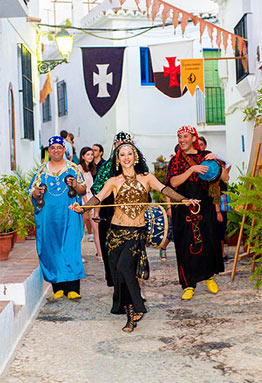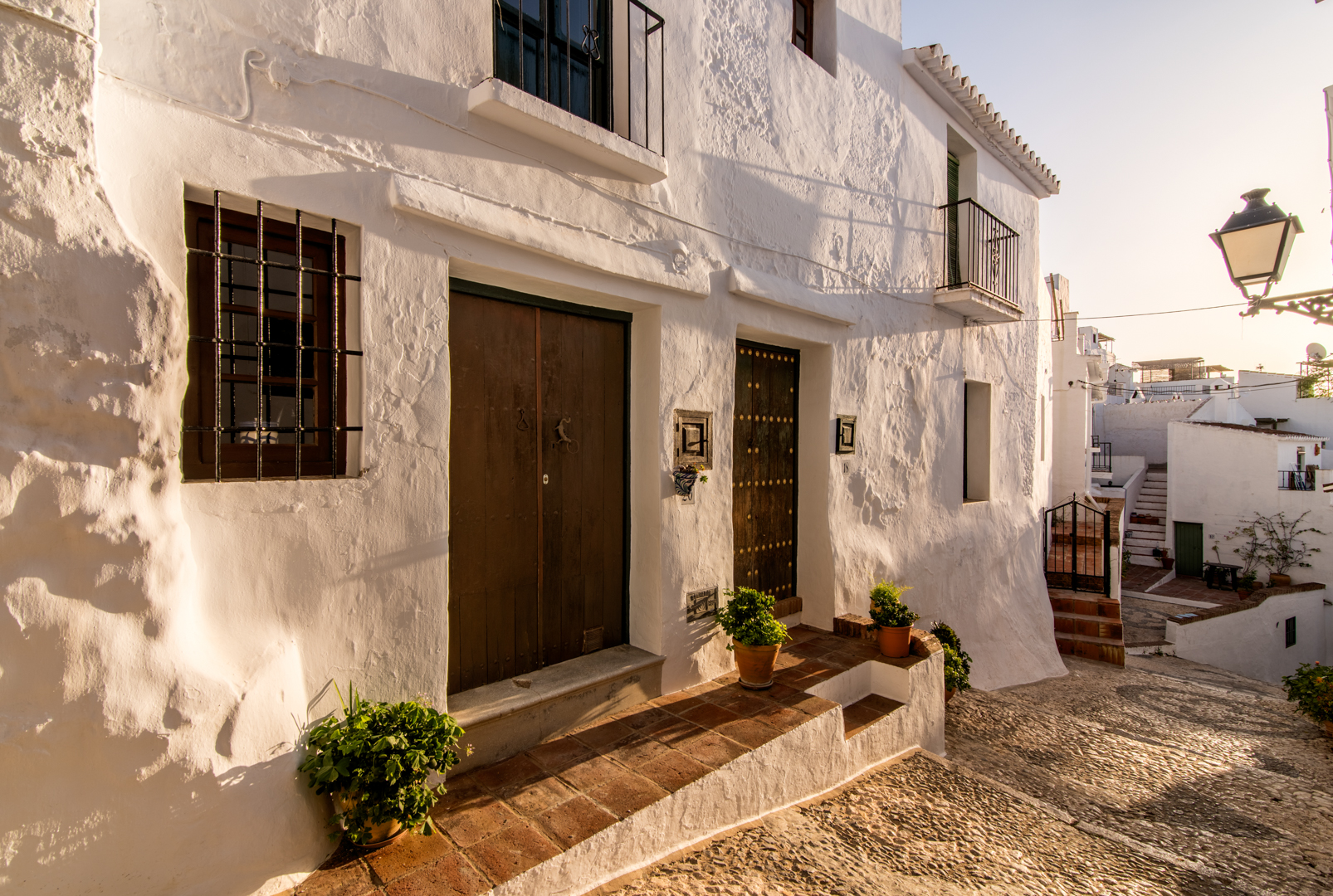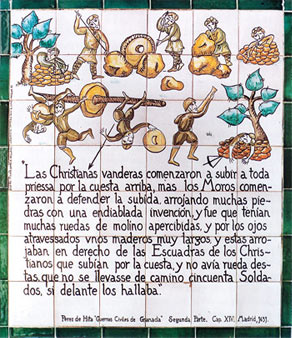About Frigiliana
Frigiliana is the real Spain and the ideal destination for a relaxed holiday in beautiful setting with lots of cultural and culinary experiences, activities and unique nature experiences.
Your first meeting
Your first meeting with Frigiliana is when the city’s whitewashed houses suddenly pop up 330 metres up on a lush hillside at the end of the 5 km winding road, which leads you from the coastal Road (Mediterranean Sea) right in the arms of the historic Andalusian city.
You never forget that!
You explore the city’s narrow staircase streets and adventurous alleys on foot.
Explore the small, charming boutiques and quickly find your favorite eaters (there is plenty to choose from and the level is high – a dish with selected local tapas is proof enough!).
The climate in Andalusia is good, and it is obvious to enjoy the area’s beaches, which are some of Spain’s best. For example, you can drive to the coastal town of Nerja at the foot of the mountain – it only takes 10 minutes. Here you will also find great restaurants and shopping opportunities. Remember to grab an ice cream on the Balcon de Europa!
On the whole, Frigiliana is a great starting point for excursions. The town is located 50 km east of Malaga, and you will easily reach the Alhambra in Granada, the mosque in Cordoba, the Gulf of Rhonda and the dripping caves of Nerja – just to name a few of the world’s most-rated attractions in the convenient driving distance of Frigiliana.
A range of beautiful trekking trips starts literally right in front of your front door. If you want to cycle, play golf or enjoy other activities in your holiday, you have all the options available. And if you are into art and culture, Frigiliana houses a number of galleries – the city is home to several visual artists, as well as a few famous Danish ones!
We look forward to welcoming you.


Special Days
January 20:
Celebration of San Sebastián, one of the city’s two patron saints.
Easter Week: Processions throughout the week but the biggest and most beautiful long Friday night and Easter Sunday
3rd of May:
Dia de la Cruz (Day of the choir). The city’s citizens decorate various crosses with flowers etc. and offers tapas and a small one.
June 13 and Feria
:City Celebration celebrating the patron saint of San Antonio with procession around the city and subsequent celebration in the river Rio Higuerón with ring riding etc.
Late Aug.:
Festival 3 Culturas – City celebration where you celebrate the 3 cultures; Judaism, Christianity and Islam. Try it. Tapas route.
1st Nov.:
All Saints Day.
Info on Frigiliana
Area: 41 km2-330 m
Inhabitants: About 3,100 of which approx. 800 foreigners (English, German, Danish, Dutch, etc.)
Description: frigilianenses or colloquially Aguanosos after a very rich local fruit.
Gastronomy: Local dishes are choto (kids) in almond sauce, rabbits and other game. This is an excellent local treasure.


Legends and traditions
After the Christian conquest of the city in 1487, the moan population lived under constant oppression until 1569 joined the revolt against the Christians who had started in Alpujarra (Granada province) and La Axarquía.
One of the greatest battles of this revolt was fought in “El Peñon de Frigiliana”, a fortress which was erected in the XI century, where rebels from both areas had entrenched themselves under the direction of El Darra and the “King of Bentomiz”, Martín Alguacíl.
The Christian troops were commanded by Luis de Requesens. The casualties on both sides were enormous. After the battle, the defeated Moors were defied. The castle was demolished.
Places of Interest:
El Casco Antiguo de Frigiliana (Frigiliana’s Old Town) is one of the districts in the area where the Arabian structure and architecture are best preserved. In 1982, the city received a national premium for beautification and improvement of the city centre.
Parroquia de San Antonio (Church of San Antonio).
The church was built in 1676 over an ancient bedechapel. It was built by the family Manrique de Lara, who at the time was the Lords of the city. The church contains three ships separated by half arches. The entrance door is constructed of brick, in which the coat of arms of the Diocen Alonso de Santo Tomás is inserted.
Ingenio or Palacio Manrique de Lara. Renaissance Palace from the XVI Yearh
. Built with materials from the former Arab fortress. In El Ingenio you will find the only current sugar cane plant in Europe.
Ermita del Ecce Homo and other monuments (Bedechapel).
Known as Santo Cristo de la Caña (sugar cane).
It’s a building from XVIII year. In smaller format. The chapel has only one ship. The chapel is built up the mountain.
El Palacio de Apero, which DATES from XVII Yearh. It was originally built as riding stables, but is used today as a culture house (Casa de la Cultura).
Archaeological remains.
There are many archaeological remains in and around Frigiliana from various poerides.
In La Cueva de los Murciélagos (bats), discoveries from the Stone Age to the bronceage have been made.
In El Barrio Mudéjar (Arabic quarter), a Menhir Argárico has been found from around 1500 years f.K.
Furthermore, discoveries from ancient times/Stone Age such as the cemetery in Cerillo de las Sombras from about 800 years f.K.
The Middle Ages are represented by the Arab fortress, from IX century. The fortress was demolished after La Batalla del Peñon. Various wall remains are preserved, etc.


